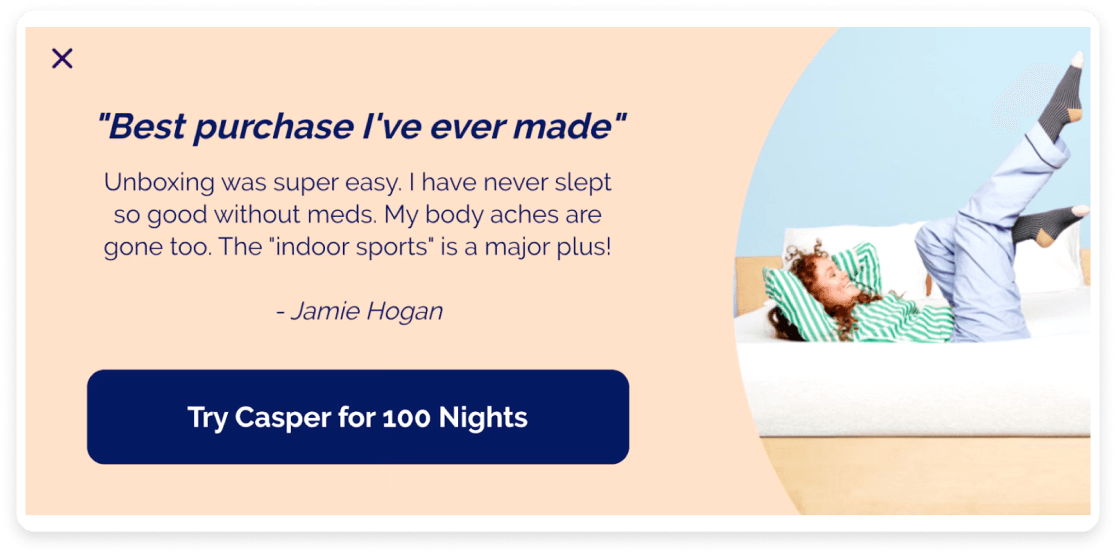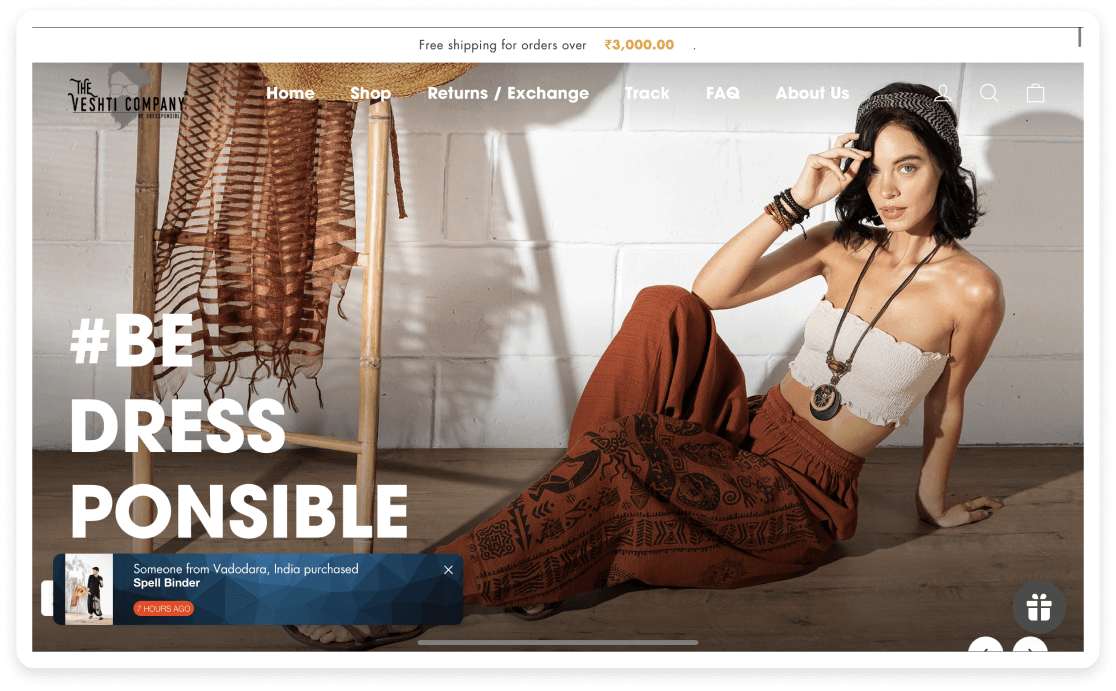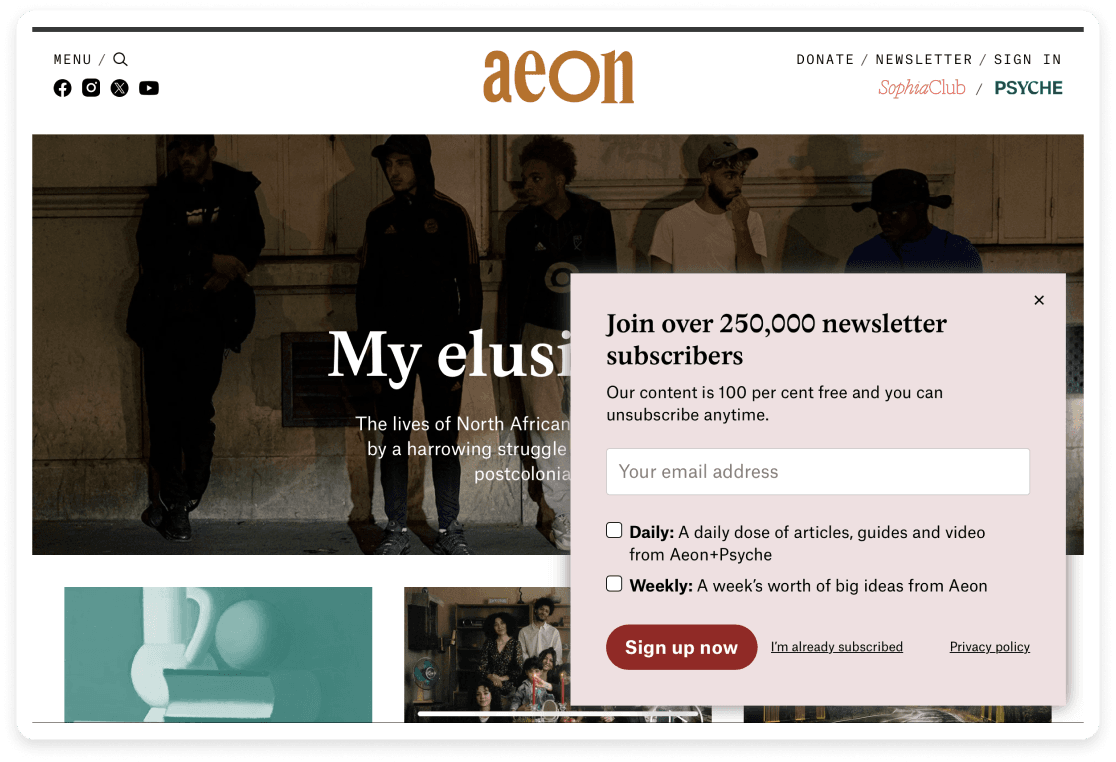Social proof popups popups or notifications on a website that employ any type of social proof. These include customer testimonials, trust badges, media mentions etc. They are effective because they encourage the user to engage with the brand while providing them a reason to trust the brand. Thus, social proof popups are more powerful and effective than more generic popups.
Here are a few key reasons why you must start leveraging social proof popups on your ecommerce store.
Boosting conversion rates: When a customer is browsing your website and considering a purchase, a social proof popup may prompt their decision to purchase the product. For instance, if you see that other satisfied customers have given favourable reviews, the chances of you buying the product are higher. And since they see it in the form of a popup, the social proof is highlighted and is hard to miss. This is borne out by statistics, as a 2017 Podium Survey states that 82% of consumers say the content of a review has convinced them to make a purchase.
Building Customer Trust: Social-proof popups can instill a sense of trust in customers. As a result, they are more likely to buy the products. For instance, seeing a popup with a good rating from a trusted source can create the impression that the brand is trustworthy.
Improving customer engagement: Popups generally involve a call to action. A common example that all of us must have come across is subscribing to the website’s email list or newsletter. A social-proof popup in particular can further increase engagement by making the call to action more appealing to the user. For example, if the user sees that thousands of users have already subscribed to the company newsletter, they are more likely to do the same.
Increasing time spent on site: A social proof popup provides new information to the user. An engaging and well-designed popup can grab the user’s attention and prompt them to spend more time on the site. According to Conversion Sciences, 10 to 15 percent of lost visitors can be “saved” by using exit-intent popups at the right time.
For example, a user might decide to leave because they are unsure of buying the product. Seeing a popup with a favourable review, celebrity endorsement or expert rating when the user is about to exit may prompt them to reconsider and purchase the product.
Let us now look at how you can integrate social proof elements into your existing popups to make them more effective.
1. Display user testimonials and ratings
People generally trust what other customers have to say over the claim of the brand itself. Seeing an actual testimonial or case study is therefore reassuring for users. You can display the best reviews about your brand in a popup on your homepage to increase your brand’s credibility. Additionally you can display a popup with a positive review for a product on a product page to convince your visitors to go ahead with a purchase.

To make sure that your product reviews are effective, there are a few suggestions that you can keep in mind.
- Use an attention grabbing review that is concise and quick to read.
- Choose a testimonial that addressed the potential concerns of your target audience
- Use images and other attribution information such as name and city of the reviewer to convey authenticity.
2. Display recent purchase activity
You can have a small recent activity popup displaying in one corner of the screen, that shows the details of the recent sales or other activity on the website. For example, whenever a sale is done, a small popup may show details such as the name and city of the customer and the product that they have purchased. If you are a small business that does not have round-the-clock sales, you can still use popups to highlight the day’s sales.
These popups are effective as they do not intrude on the users’ browsing. At the same time, they also show that your products are popular and in demand.

Trust badges are generally used to indicate expert approval. Approval by industry experts is a form of social proof as it makes it easier for customers to trust the product and aids decision-making.
For instance, a lot of vegan brands use the PeTA cruelty-free logo to show that their brand does not harm animals. The logo may carry more weight for customers than explaining their vegan nature through text. The use of multiple trust badges can be very helpful in establishing credibility. Adding these to popups can be a great idea as it makes them more visible.
You can also add media mentions instead of or along with these trust badges, especially if your product has great press coverage. However, make sure that you do not add so much information to a popup that it becomes too cluttered.
These popups can be displayed as exit-intent popups on your online store to help potential customers reconsider their decision to leave the website.
4. Spotlight bestseller products
Especially when a website has a large product range, the customer has too many options. In this case, people often trust bestselling products more, especially if they are first-time customers. A bestselling status shows that many people have bought and liked that product.
You can add a picture of your bestselling product with a bestselling tag to redirect your customers to the product page. This can be combined with another element discussed here, such as product testimonials.
Another interesting way to do this is to showcase a bestselling bundle of popular products with a count of how many people have already purchased it, how many are left in stock or simply a message saying that the bundle is selling out fast.
5. Display subscriber count
Displaying a subscriber count is an effective and subtle way to include social proof in your popup. This strategy uses the power of large numbers to attract users and functions as social proof.
Providing a subscriber count in opt-in popups or mailing list popups can create a sense of FOMO and reassure the user about trusting the website. As in the above case, this too can be used in combination with other elements such as trust badges. Here is an example of the use of subscriber count on a popup:

Conclusion
Popups are much-ignored, yet highly effective tools that you can use to drive conversions on your website. By upgrading your popups to social proof popups, you can make your brand memorable while driving more conversions.
The ideas given above are merely a starting point for your creativity. You can combine different types of social proofs, see more social proof examples and try different variations to see what works best for you. You can also incorporate these social proof popup ideas with better graphic design and elements such as gamification. The possibilities are truly endless.












